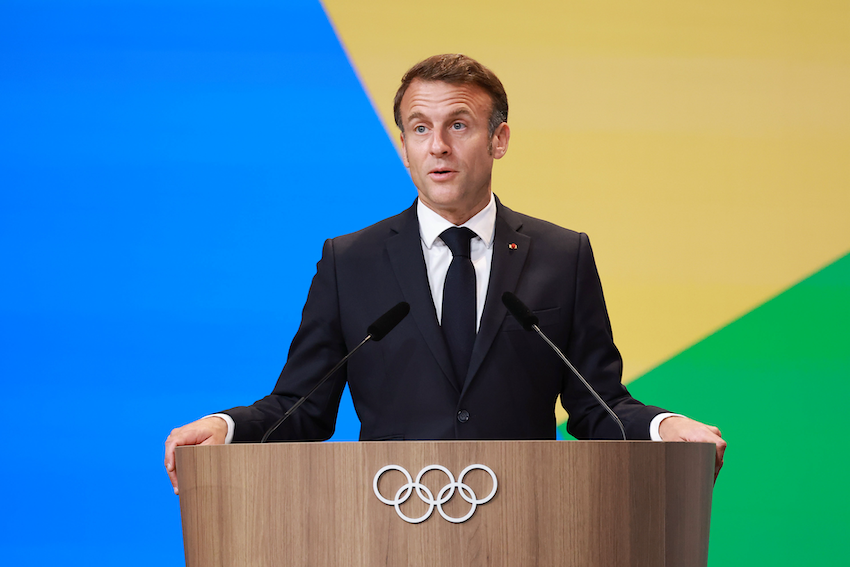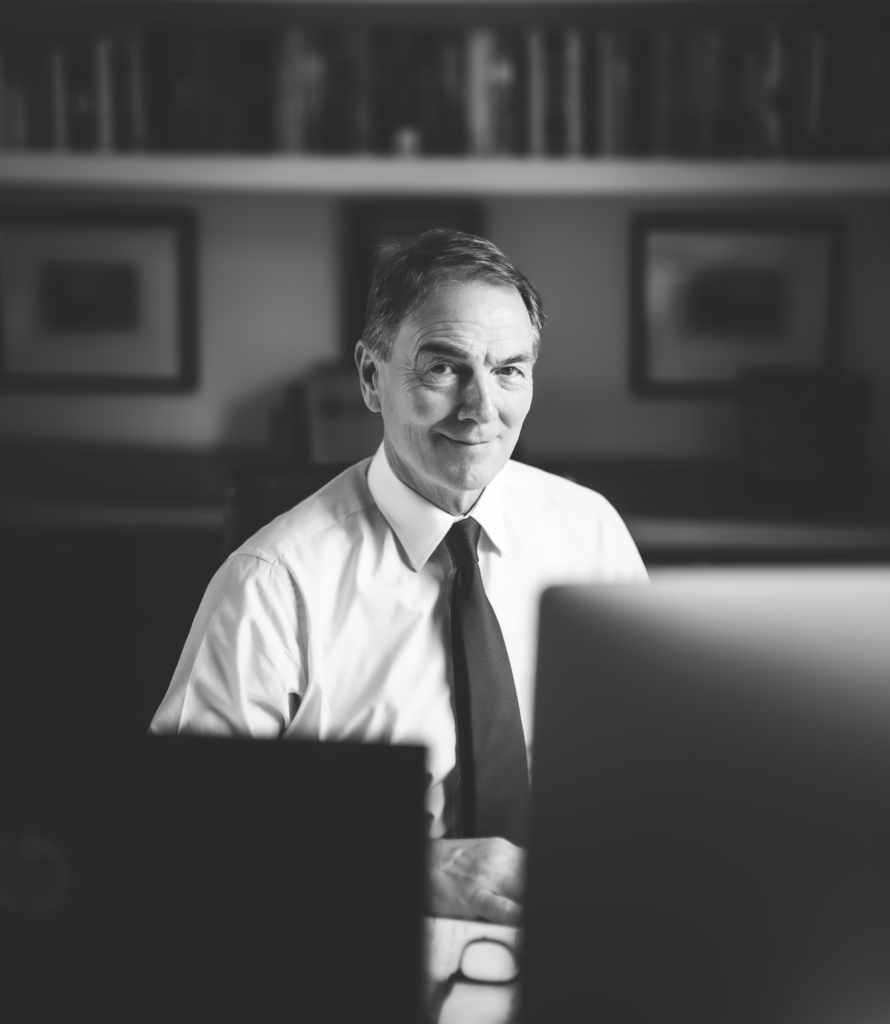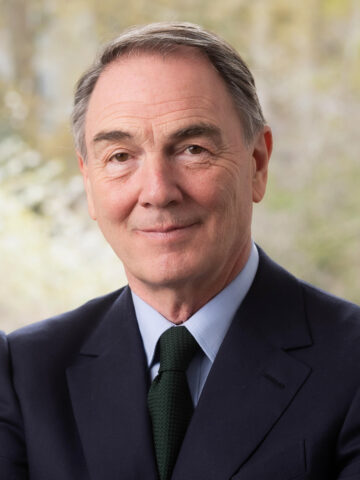Accelerating change, increasingly complicated issues, a wide web of stakeholders—what does transformation represent against that backdrop?
Resilience, innovation, adaptation, agility, engagement—we hear about these a lot more now in a post-pandemic world. Increasingly, another word behind which stands a very important corporate theme is transformation. It’s being used so much because it reflects how organizations generally have begun to find their footing in this new environment. More leadership teams are starting to take more active steps toward progress in the face of mounting uncertainty. The adversity in the environment demands transformation, so the focus for leadership becomes performance in the present tense to deliver sustainable growth and resilience. We are building an engine to drive our businesses into the future.
AI and tech innovation are clearly big factors in both that uncertainty and the desire to be proactive. The fear of missing out around smart adoption of the new technologies is certainly one factor making most of our clients look hard at what they and their competitors are doing. But board agendas are crowded with other issues—climate change, regulatory and social pressures—that require sophisticated responses. And there, technology offers real potential. We are seeing leaders everywhere look for new ways forward in a fast-changing environment where staying still or just defending a position feels the least attractive option.
In recent years, CEOs and leadership teams have had to develop a much deeper understanding of their stakeholders and their critical issues. And we have seen boards and leadership realizing the increasing importance of the changes in the landscape and the agendas around them.
Employees, regulators, suppliers, investors—wherever you look, key stakeholders are not only changing how they behave, they are becoming more activist in their views and interacting with each other more frequently. Understanding their agendas and priorities has become essential, especially as these are often root causes that can rise to the level of critical issues quickly, often in unforeseeable ways.
This is where Brunswick comes in. We have been privileged through working with clients for many years all over the world to build deep experience with different stakeholder groups in high-stakes scenarios. We’ve found time and again that in those situations, a stakeholder-centric approach is the key to the successful delivery of strategy.
M&A, for instance, is more connected to a mix of regulatory and political groups than ever before, and affects employees and suppliers much more directly than it did in the past. Each stakeholder group now has an ability to make its position clear through media or social media in ways that can have a profound outcome on the transactions. The way leadership deals with critical issues defines the way they are seen and their relationships with key stakeholders. Handling a crisis well can be a great positive drive for progress.
We are seeing leaders everywhere look for new ways forward in a fast-changing environment where staying still or just defending a position feels the least attractive option.
These issues can be chronic and long running like the energy transition, employee engagement and culture change, or they can be acute and urgent like a live crisis, activist pressure or financial transactions—areas where we first built our reputation for impactful advice and programs as a firm. What is changing is that these high-stakes issues now are complex, enmeshed with adjacent or similar issues, and the broad range of internal and external stakeholders affected are becoming activists in their own right.
The leadership challenge has only become more difficult. It feels the information is more and more incomplete with so many parts that interweave. Despite the increasing complexity, the responses of different stakeholders demand action often in minutes or hours, rather than having days or weeks to give what might feel an appropriate amount of time for full deliberation. The saying that “life has never been faster but will never be slower” feels truer than ever, particularly in business but also in every other part of our lives.
And so we come back to the appeal of transformation. In a world dominated by greater uncertainty—technological, geopolitical, economic, social—we are seeing more and more leadership teams taking decisive action to transform all or key parts of
their organizations.
That is why we chose this theme for this edition of the Review. There are so many different and inspiring stories that we see and are privileged to be part of. Looked at as a group of stories, there are key elements of successful transformation that consistently come through in almost every article of this edition.
The changes around the companies you will read about were clearly taking place faster than the incremental changes they were making. Their key first step is what Matthew Syed calls the growth mindset culture, where the response to new challenges sparks the creative thinking to find opportunities, rather than a defensive reaction.
The second step is ensuring that from the earliest stages everything is designed to energize and stimulate the folk most essential to a successful execution of the plan. Employees are front and center in that, not an add-on to be communicated to.
This was clearly central to the effect LVMH’s Creative Partnership with the Paris Olympics had on the company, as Antoine Arnault tells us. The luxury goods business, which has a surprisingly long history of supporting sport, was involved in so many aspects of this event, with the eyes of the entire world watching. Arnault says it has inspired LVMH to think about its own internal narrative and how best to unlock the potential to elevate each team member’s contribution.
We saw this approach again firsthand working with Kellanova and CEO Steve Cahillane on their hugely impressive transformation. His piece and that of WK Kellogg Co CEO Gary Pilnick, bring to life some of the difficult decisions and the challenges around the successful spinoff of the cereal company and the creation of the new brand, Kellanova.
As a wise man once said to me, “there is no such thing as a good idea if it is not executed well.”
Cahillane’s version of transformational change—built around mindset and supported by practical tools—is particularly interesting as it embodies another theme of transformation: embracing continuing change and the opportunities that brings for more lively and creative culture in the organization. Kellogg is a 118-year-old brand with deep respect for its founder and a sense of family throughout its organization. Making that an essential part of its future was what made the spin so successful and such an exciting journey.
At Brunswick, we have never seen corporate culture as a “soft” issue—something detached from the success of the business. Culture plays out in an organization’s processes and delivery points. In so many of the transformational stories in this edition, that is proven out with enormous benefits for everyone involved. As a wise man once said to me “there is no such thing as a good idea if it is not executed well.”
This emphasis on culture and execution is at the heart of CEO Jens Lund’s success at the global freight forward company DSV. In these pages, he talks about his rigorous institutional approach to transparency, an approach built from the ground up that he credits with increasing employee engagement and satisfaction, productivity and profit.
This approach of deep engagement as central to a successful transformation strategy was again one we were very privileged to play a part in with pladis. It felt very bold at the time when CEO Salman Amin insisted on engaging with everyone at every level and in every role, but the results, as he lays out in a terrifically insightful piece, show that it not only created the performance shift in the company but set up a platform for longer-term sustainable growth.
Genuine engagement and trust building with all the relevant stakeholders allows you to take them with you, even when there are course corrections or bumps in the road. It cuts to the heart of so many of the situations we help clients navigate, Brooklyn Museum’s President Anne Pasternak does that by bringing the community into her decision-making in important ways. I have the delight of being in conversation with one of India’s leading corporate leaders Cyril Shroff and getting his views on transformation not just for a company but a whole economy. We also report on the rise of an arts sector in India that is creating opportunities for an entire ecosystem of creative and educational support.
I find this collection of articles to be genuinely inspiring. They demonstrate a very high level of sophisticated thinking and planning. Crucially it shows a recognition of the power of humanity in business. Standing by the belief that respecting everyone around you and finding ways of working in a profoundly collaborative way toward a common goal can lead to transformative and highly impressive outcomes.
We are very proud to host them and if you have any particular thoughts, ideas or responses please do not hesitate to reach out to your closest Brunswick contact or be in touch with me directly. Thank you.
More from this issue

Transformation
Most read from this issue

Macron and the Olympics





